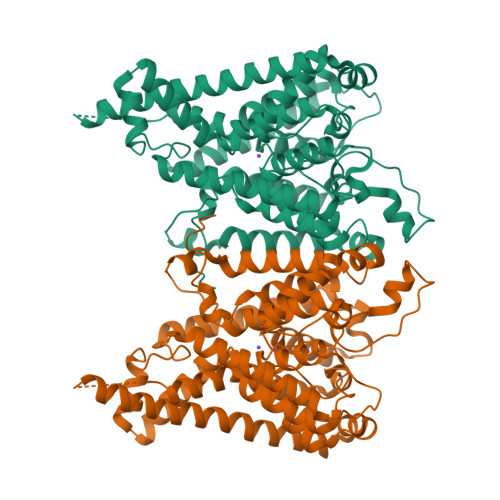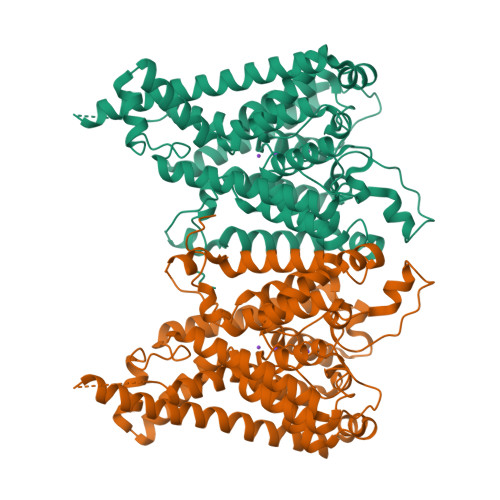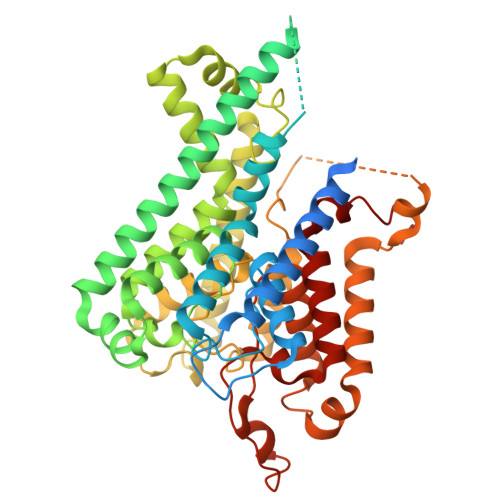Structures and ion transport mechanisms of plant high-affinity potassium transporters.
Wang, J., Luo, Y., Ye, F., Ding, Z.J., Zheng, S.J., Qiao, S., Wang, Y., Guo, J., Yang, W., Su, N.(2024) Mol Plant 17: 409-422
- PubMed: 38335958
- DOI: https://doi.org/10.1016/j.molp.2024.01.007
- Primary Citation of Related Structures:
8W9N, 8W9O, 8W9T, 8W9V - PubMed Abstract:
Plant high-affinity K + transporters (HKTs) mediate Na + and K + uptake, maintain Na + /K + homeostasis, and therefore play crucial roles in plant salt tolerance. In this study, we present cryoelectron microscopy structures of HKTs from two classes, class I HKT1;1 from Arabidopsis thaliana (AtHKT1;1) and class II HKT2;1 from Triticum aestivum (TaHKT2;1), in both Na + - and K + -bound states at 2.6- to 3.0-Å resolutions. Both AtHKT1;1 and TaHKT2;1 function as homodimers. Each HKT subunit consists of four tandem domain units (D1-D4) with a repeated K + -channel-like M-P-M topology. In each subunit, D1-D4 assemble into an ion conduction pore with a pseudo-four-fold symmetry. Although both TaHKT2;1 and AtHKT1;1 have only one putative Na + ion bound in the selectivity filter with a similar coordination pattern, the two HKTs display different K + binding modes in the filter. TaHKT2;1 has three K + ions bound in the selectivity filter, but AtHKT1;1 has only two K + ions bound in the filter, which has a narrowed external entrance due to the presence of a Ser residue in the first filter motif. These structures, along with computational, mutational, and electrophysiological analyses, enable us to pinpoint key residues that are critical for the ion selectivity of HKTs. The findings provide new insights into the ion selectivity and ion transport mechanisms of plant HKTs and improve our understanding about how HKTs mediate plant salt tolerance and enhance crop growth.
Organizational Affiliation:
International Institutes of Medicine, the Fourth Affiliated Hospital, Zhejiang University School of Medicine, Yiwu, Zhejiang 322000, China.

















